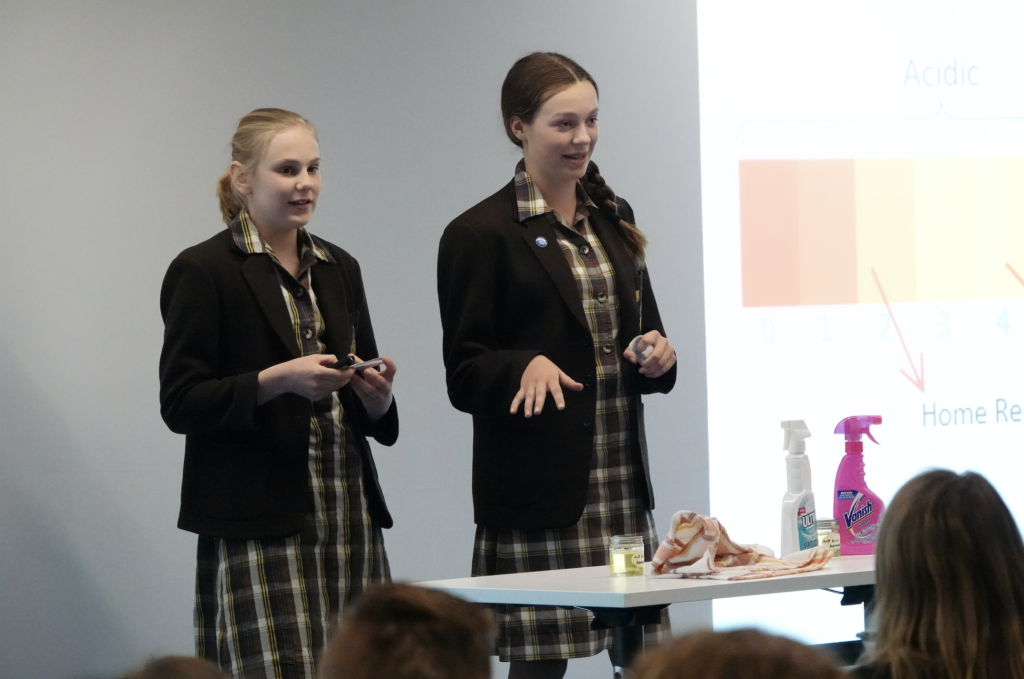The Peter Doherty Science Award

Are you paying too much for your stain remover? Why do you choose the brand you buy? These are questions hidden in plain sight – as many questions are.
The Peter Doherty Science Award (PDSA) encourages scientific thought by inspiring students to solve everyday issues. Students are encouraged to undertake research using the scientific method to ask questions and find answers.
The PDSA program was established in 2009 as a joint initiative of the Committee for Ballarat, Ballarat Foundation and Nobel Laureate Professor Peter Doherty. It was by finding answers to the questions that no one else was asking that Doherty, together with Swiss colleague, Rolf Zinkernagel, discovered how the immune system recognises virus-infected cells. They performed pivotal experiments that revealed the requirement for a killer T cell response: these specialised immune cells are triggered to kill an infected cell so long as they simultaneously recognise foreign proteins from viruses themselves “presented” by a self-protein on the surface of the cell, called MHC. This discovery earned the pair the 1996 Nobel Prize in Physiology or Medicine.
Now in its 11th year, the PDSA legacy continues with the help of Ballarat Tech School. Students undertake an introductory program at Ballarat Tech School, where they are provided with the framework to undertake their own research and present their findings to a community panel. Students are encouraged to take on a real-world question or problem, develop possible solutions, design tests for their hypotheses.
Fourteen students from Mount Clear College, Ballarat Grammar and Phoenix Community College were selected as the 2019 finalists. Their projects covered topics such as the number of blades optimal for wind turbines, and the durability of a phone battery when using certain apps.
Year 9 students, Ashlyn Hall and Pippa Murphy, were announced as the winners of the award in 2019. They put Vanish, Coles Ultra Brand and a home remedy stain remover to the test to clean five common household stains; the girls splashed red wine, dirt, oil, coffee and tomato sauce on white, cotton t-shirts to test which worked best.
It turned out that their home remedy, made with two parts hydrogen peroxide, one part dishwashing liquid, and a squeeze of lemon, was the most effective at removing stains, followed by the Coles home brand product. It goes to show that paying for a more pricey, branded product may not always pay off. Importantly they performed their tests three times to ensure the accuracy and reproducibility of the results – that’s a lot of t-shirts to clean!
‘It was really cool to see the results in the end. Everyone assumes that we know why something works better, but we actually investigated the answer,’ says Pippa.

The PDSA program provides students with the opportunity to get more involved in their own learning. ‘It was an opportunity to take what we had learnt in the classroom and do something with it. Having control and following it through to the end was great!’ says Ashlyn.
Each group is assessed at their own school and then the finalists present their work to the community. They therefore learn the best way to communicate science and their results on posters and public presentations. While some may have found it daunting, Pippa and Ashlyn were not phased – ‘it’s easy to present knowledge that you know,’ says Pippa.
Professor Doherty’s intention in initiating this award was to encourage excellence in scientific thought and activity among secondary school students. Students also develop “soft skills” such as teamwork, logical and analytical thinking skills, and communication skills. Around 75 per cent of jobs require STEM skills, and it is the ability to apply these skills that will better prepare them for the future.
Hundreds of students from seven schools in the local region participated in the PDSA last year, tackling questions such as “how feasible it is to multi-task while texting?” and “which fabrics are best in lab coat design?”. Above all else, the PDSA encourages curiosity and discovery. And who knows? Perhaps students can learn a thing or two about the things they use in their everyday lives.
Catriona Nguyen-Robertson
